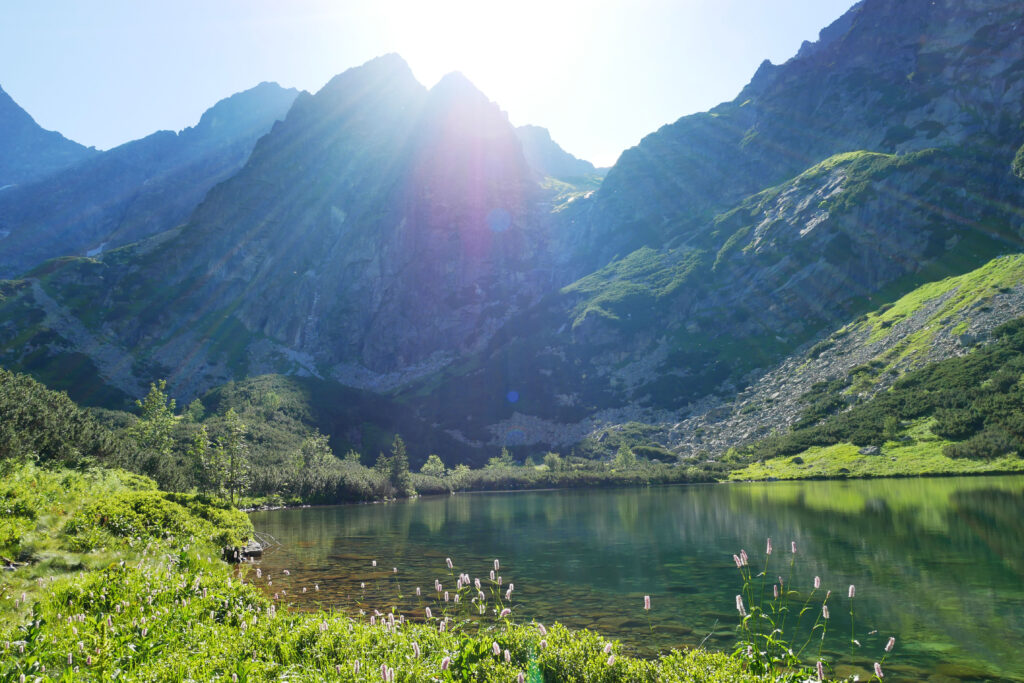Our second Wor(l)d Views interview introduces the work and languages of Malgorzata Blicharska.
Please tell us a little bit about who you are, where you live, what you do, etc.
I am originally in Poland, but I have been living in Sweden for 15 years. I am a senior lecturer in Natural Resources and Sustainable Development at Uppsala University. My original background is in forestry and biology, but now I focus more on implementation of environmental policies, environmental conflicts and attitudes. Through my work, I am trying to make people understand that nature is important. In my work, I call it biodiversity, a more complex word.

What languages do you speak, and how are these languages part of your life?
My original language is Polish, but that is probably the language I use least now. I speak Swedish, and that is the language I use in everyday life, things at home, or the shops. If I talk about my work, it’s much easier in English. Sometimes, when you have spent a lot of time working in one language, and daily life is in another language, it can become even difficult to think in your own language. English and Swedish are quite similar in structure, so it’s easier for me to translate between those two languages. At work, I speak to people in English or Swedish, whereas at home, it’s Swedish or Polish. My partner learnt some Polish, which I am grateful for, because I think Polish is quite a difficult language to learn. When we met, we sometimes used Latin to communicate!

Do you think your language other than English are an important part of your identity?
I think Polish and Swedish are a part of my identity, and I think that is because I have lived in these two countries. English, even though I work with it on a daily basis, is least connected to my identity. I think, for language to be part of your identity, you have to connect it to culture, to events, to people, to food. I think living in different countries and learning different languages enriches you – it’s not just about meeting the people, it’s about understanding the nuances of language, and how they connect to culture. For example, there is a Swedish word called “lagom”, which doesn’t have an equivalent in Polish or English – it means “just right”, or “balanced”, not too much, not too little. You can use it to talk about a mood, or about having just the right amount of cake!
When you think/talk about nature, do your various languages play a role?
At the beginning, a lot of my research took place in Poland, because a lot of my research involves interviewing people and having focus groups, and doing that in Polish felt most natural. But today, I do a lot of work in Sweden, and internationally, too. One word that springs to mind is the Swedish word fjäll, which means mountain, but I would only ever use it to describe Swedish or Scandinavian mountains, not mountains anywhere else in the world. To me, that is a word very much linked to a place. I like the Tatra mountains, which are on the border between Poland and Slovakia, but I would never call them fjäll.

So, are the Tatra mountains your favourite place in nature?
Yes, they are. I go there to hike, I used to climb there a lot, a bit less now because of work and family. I think it’s my favourite because you can find places where there are no people. It’s also simply beautiful – there is a lot of space, but it’s also challenging. They are not easy mountains, they are steep and alpine. Having this challenge also makes you relax mentally, because you go there, and you just focus on your next step, and you don’t think about anything else. But in general, I have a lot of favourite places: the Białowieża forest in Poland, because it is wild, it’s a wilderness where you can go and be alone, and you have to manage on your own, without other people, which I like.

Pretty much all languages have little quirks, names for animals or plants that might seem unusual to non-speakers of the language (think dragon+fly, or lady+bird). Can you think of some examples in your languages, and explain them to us? Or share some of your favourite, nature-related words/phrases in your language?
There is a group of flowers, which in Swedish are simply called blåsippa, vitsippa and gulsippa – blå is blue, vit is white, and gul is yellow, and sippa means “prim”. So in Swedish, the words are related, but in English, they have different names: blåsippa is liverwort, vitsippa is wood anemone, and gulsippa is yellow anemone, yellow wood anemone, or buttercup anemone.
One interesting plant in Polish is borscht (barszcz zwyczajny – common borscht (in Latin: Heracleum spondylium): https://en.wikipedia.org/wiki/Heracleum_sphondylium
Originally, the stem and leaves were made to cook soup, and the plant is still collected by foragers today – but when we talk about borscht soup today, we typically mean red beet soup – over time, red beet replaced borscht in the soup, but it retains the name, so now, borscht soup has lots of ingredients…but not actually borscht!
If you work with nature and are multilingual, and fancy being included in a future “Wor(l)ds Views” interview, please get in touch with us at lostworlds (at) sheffield.ac.uk.